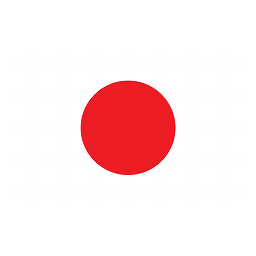- Patrick Palacios (36')
- Keito Nakamura (22', 30', 43')
- Takefusa Kubo (45')
- Taisei Miyashiro (51')
- Toichi Suzuki (90')
Clinical Japan put Honduras to the sword
Keito Nakamura wrote his name into the history books, with the first hat-trick of the 2017 Under-17 World Cup, helping Japan start their campaign with a 6-1 win against Honduras.
The Mitsubishi Yowa FC winger became the second Asian player to score a hat-trick at the U-17 World Cup, the first since Khaled Jasem of Bahrain in 1989, and the 32nd overall. Nakamura's flawless performance in the first half - three goals and an assist - put what had looked like a tight contest in the first 20 minutes, to bed.
Japan coach Yoshiro Moriyama started a with a conventional 4-4-2 formation, placing star striker Takefusa Kubo alongside Taisei Miyashiro, with Nakamura starting from the right wing and Soichiro Kozuki attacking down the left. Honduras coach Jose Valladares played a 4-4-2 diamond, with Gerson Chavez sitting just ahead of the back four, where captain Cristian Moreira was joined by Emilio Campos in central defence.
Japan made a bright start, using the full width of the field, but Honduras were quick on the counters, especially with striker Patrick Palacios.
The Japanese attack formed some useful triads, with Kubo dropping wide from time to time to interchange positions with Nakamura, and it was from one such move that Kubo drove himself to the right, and turned in a cross that was headed into goal by Nakamura in the 22nd minute.
Eight minutes later, Nakamura doubled Japan's advantage, but Honduras threatened to catch up with their opponents when Palacios made it 2-1 on 36 minutes. In the 43rd minute, Kozuki turned provider for Nakamura, and there was much relief in the media gallery and the stand right next to it, both occupied predominantly by the Japanese, when Kubo opened his tournament account in the last minute of regulation time in the first half with a Nakamura assist.
Nakamura's game was based on terrific anticipation, good strength when on the ball, and the ability to pull away from his nearest player with good pace. The toughest task of the night fell to left-back Axel Gomez, and before he was replaced following an injury in the second half, his coach had already been forced at half-time to make the change of pulling out a central midfielder to add another full-back to cover for Nakamura, a decidedly unusual move.
The Japanese fans, and some Indian converts around them, had been cheering predominantly for Kubo before the match, but that chant was understandably replaced by their new favourite, "Keito! Keito!". The second half was more of the Kubo show, as the 16-year-old showed exactly why he was played in Japan's U-20 World Cup squad, and why he has been compared with Lionel Messi.
First, Kubo came up with a darting run down the left, eliminating two defenders in the process, before putting in a delightful dink behind the defence to find Miyashiro, who made it 5-1 just six minutes into the second half.
Later in the half, he would skip and dance his way into the Honduran penalty box, beating defenders as they either lost balance or realised they were waging a losing battle. In the end, Kubo failed to round off goalkeeper Alex Rivera, who was brave throughout the game and often was left with no cover from the defensive line.
The exclamation mark was put in by left-back Toichi Suzuki, who picked up a long ball, beat the defence and then kept his composure inside the opposition's penalty area, waiting for Rivera to commit before placing it low to the goalkeeper's left.
Honduras coach Valladares was often seen gesturing angrily to his support staff and shrugging his shoulders in exasperation. He may have thought that his team's industriousness and physicality would be enough to keep them out of harm's way against Japan.
He probably never factored in Nakamura, and neither did most of the Japanese supporters.
They will remember him now.
Game Information
- Referees:
- Anthony Taylor
FIFA Under-17 World Cup Standings
| Team | GP | W | D | L | GD | P |
|---|---|---|---|---|---|---|
| France U17 | 3 | 3 | 0 | 0 | +7 | 9 |
| United States U17 | 3 | 2 | 0 | 1 | 0 | 6 |
| Burkina Faso U17 | 3 | 1 | 0 | 2 | -3 | 3 |
| South Korea U17 | 3 | 0 | 0 | 3 | -4 | 0 |

